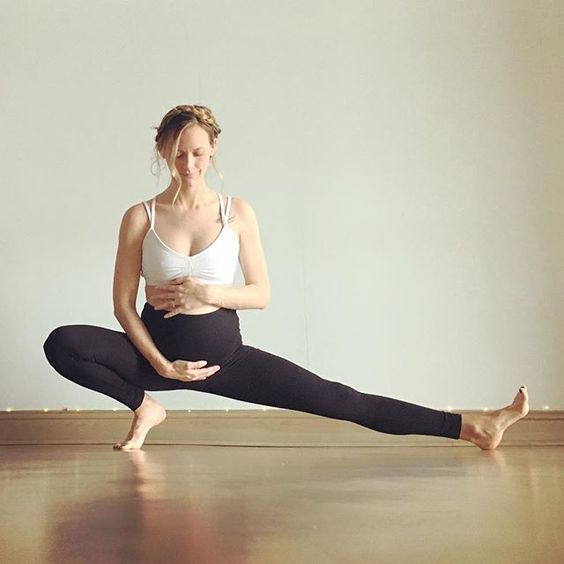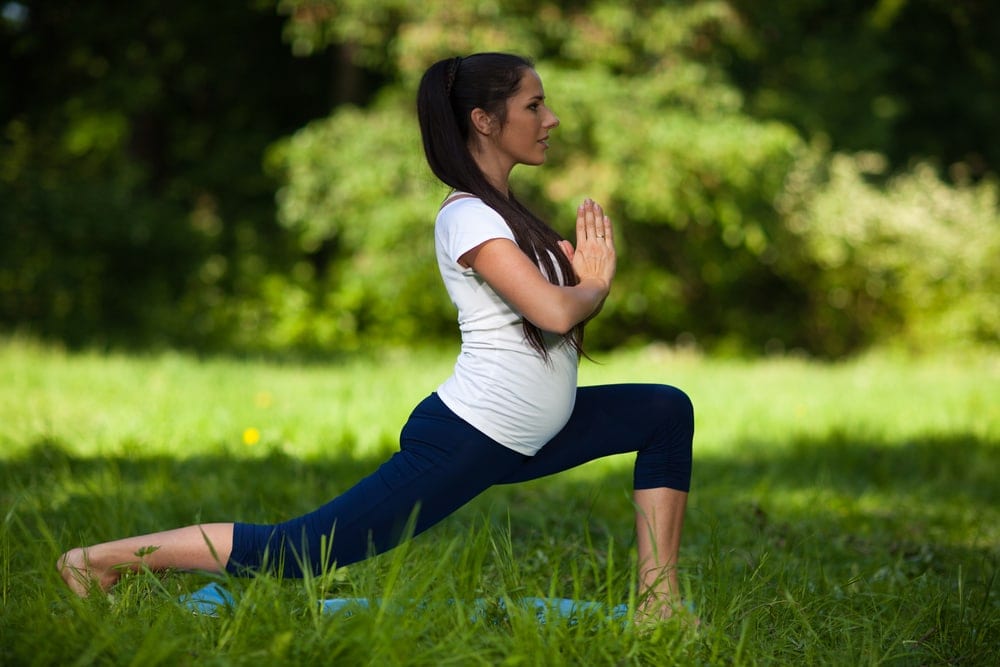When it comes to exercise during pregnancy, it’s important to prioritize safety and make informed choices. While regular physical activity is generally beneficial, there are certain exercises that pregnant women should steer clear of due to potential risks. Understanding which exercises to avoid can help ensure the well-being of both the mother and the growing baby.

In this article, we will explore 15 exercises that should never be done during pregnancy. By highlighting the potential dangers and reasons behind these recommendations, we aim to provide valuable insights for pregnant women seeking to maintain a safe and healthy exercise routine. Remember, consulting with a healthcare provider or prenatal exercise specialist is crucial for personalized guidance based on individual needs and circumstances. Let’s delve into the exercises that should be avoided during pregnancy to promote a safe and enjoyable journey for expectant mothers.
Why Should Women Avoid Heavy Exercises During Pregnancy?
Engaging in heavy exercises during pregnancy is generally not recommended due to several reasons. Firstly, heavy exercises can put excessive strain on the joints, ligaments, and muscles, which may already be under added stress during pregnancy. This can increase the risk of injury, joint problems, or musculoskeletal issues. Secondly, heavy exercises often require intense exertion and may elevate the heart rate significantly. This can lead to a decrease in oxygen supply to the fetus and potentially compromise its well-being.

Additionally, heavy exercises can place excessive pressure on the pelvic floor muscles, which are already weakened during pregnancy, potentially contributing to pelvic floor dysfunction or urinary incontinence. Lastly, heavy exercises may cause overheating and dehydration, which can be harmful to both the mother and the baby. It is important to prioritize moderate-intensity exercises that are safe, comfortable, and appropriate for the changing needs of the body during pregnancy. Always consult with a healthcare provider for personalized advice on exercise during pregnancy.
Here are 10 exercises that are typically not recommended during pregnancy
High-impact activities
Exercises with a high risk of falls or injury, such as contact sports, gymnastics, or vigorous jumping exercises, should be avoided to minimize the risk of trauma to the abdomen.

Engaging in high-impact activities, such as contact sports or vigorous jumping exercises, should generally be avoided during pregnancy. These activities carry a higher risk of falls, collisions, and trauma to the abdomen, which can pose a danger to the developing baby. Impact sports like basketball, soccer, or martial arts may involve physical contact, increasing the risk of injury to the mother and potential harm to the fetus.
Moreover, the changing center of gravity and increased joint laxity during pregnancy can make maintaining balance and stability more challenging, further increasing the likelihood of accidents or falls. Additionally, participating in high-impact activities can place excessive stress on the joints, ligaments, and muscles, potentially leading to strains, sprains, or other musculoskeletal injuries. To ensure a safe and healthy exercise routine, it is advisable for pregnant women to opt for low-impact or moderate-intensity exercises that minimize the risk of injury while providing appropriate levels of physical activity.
Consulting with a healthcare provider is always recommended to assess individual circumstances and determine the most suitable exercise options during pregnancy, prioritizing the well-being of both the mother and the developing baby.
Heavy weightlifting
Lifting heavy weights can strain the back, pelvic floor, and abdominal muscles. It is generally advised to avoid heavy weightlifting and opt for lighter weights or resistance training under proper guidance.

Engaging in heavy weightlifting during pregnancy is generally not recommended for several important reasons. First and foremost, heavy weightlifting puts significant strain on the joints, ligaments, and muscles, which are already under increased stress during pregnancy. This can heighten the risk of musculoskeletal injuries, strains, or sprains, potentially leading to discomfort and complications.
Additionally, lifting heavy weights can exert excessive pressure on the abdominal muscles, which are already stretched and weakened during pregnancy. This can contribute to a condition called diastasis recti, where the abdominal muscles separate, affecting core stability and causing discomfort. Furthermore, heavy weightlifting can elevate blood pressure and reduce blood flow to the uterus, potentially compromising oxygen and nutrient supply to the developing baby. The pelvic floor is also vulnerable during pregnancy, and heavy weightlifting can worsen or contribute to issues like urinary incontinence or pelvic organ prolapse.
Considering the changing center of gravity and increased joint laxity, maintaining proper form and balance while lifting heavy weights becomes more challenging, increasing the risk of injury or falls. Therefore, it is advisable to prioritize exercises that are safe, comfortable, and appropriate for the changing needs of the body during pregnancy. Opting for moderate-intensity exercises, guided by healthcare providers or qualified prenatal exercise specialists, can help maintain strength, flexibility, and overall well-being while minimizing potential risks to both the mother and the growing baby.
Exercises lying flat on the back
Lying flat on the back for extended periods, especially after the first trimester, can potentially compress the inferior vena cava and reduce blood flow to the uterus. It’s advisable to avoid exercises that involve this position, such as traditional sit-ups or crunches.

Engaging in exercises that require lying flat on the back during pregnancy may have certain disadvantages and are generally not recommended, especially after the first trimester. One significant concern is the potential compression of the inferior vena cava, the large vein responsible for returning blood to the heart from the lower body. When lying flat on the back, this vein can be compressed, reducing blood flow and oxygen supply to both the mother and the baby. This can lead to feelings of dizziness, shortness of breath, or a drop in blood pressure.
Additionally, as pregnancy progresses, the growing uterus puts increased pressure on the spine and back muscles. Exercises performed in a supine position can exacerbate this strain, potentially causing discomfort or back pain. Moreover, prolonged lying on the back can restrict circulation, contributing to swelling in the extremities. In some cases, it can even lead to supine hypotensive syndrome, characterized by a sudden drop in blood pressure and resulting in lightheadedness or a feeling of faintness. To mitigate these potential disadvantages, it is advisable to modify exercises by propping up the upper body with pillows or using an incline bench to maintain a semi-reclined or elevated position.
Alternatively, choosing exercises in a seated, side-lying, or standing position can help ensure proper blood flow, alleviate strain on the back, and promote comfort and safety throughout pregnancy. It is essential to consult with a healthcare provider or a qualified prenatal exercise specialist for personalized guidance on exercise modifications and suitable alternatives during pregnancy.
Exercises that involve deep twisting or rotation
Activities that involve deep twisting or rotation at the waist, such as certain yoga poses or intense abdominal exercises, should be avoided as they can strain the abdominal muscles and potentially disrupt blood flow to the uterus.

Engaging in exercises that involve deep twisting or rotation of the torso during pregnancy is generally not recommended due to several important reasons. Firstly, these movements can strain the abdominal muscles, which are already stretched and under increased pressure as the uterus expands during pregnancy. Excessive twisting or rotation can lead to discomfort, diastasis recti (separation of the abdominal muscles), or even abdominal wall hernias.
Secondly, the ligaments and joints in the body become more relaxed and flexible during pregnancy due to hormonal changes. This increased flexibility can make the body more susceptible to injuries, particularly in the spine and pelvis, when performing deep twisting or rotation movements. Moreover, certain twisting exercises can compress the blood vessels, including the vena cava, which may restrict blood flow and oxygen supply to both the mother and the baby. This can result in dizziness, shortness of breath, or a drop in blood pressure. Lastly, excessive twisting or rotation movements can place strain on the pelvic floor muscles, which are already under increased pressure during pregnancy. This can potentially contribute to pelvic floor dysfunction or worsen existing conditions such as urinary incontinence or pelvic organ prolapse.
To ensure a safe and comfortable exercise routine, it is advisable to choose exercises that involve gentle, controlled movements and avoid deep twisting or rotation of the torso. It is always best to consult with a healthcare provider or a qualified prenatal exercise specialist to receive personalized guidance on exercise modifications and suitable alternatives during pregnancy. Prioritizing the safety and well-being of both the
Hot yoga or hot Pilates
Hot yoga or hot Pilates: High-temperature environments, such as hot yoga or hot Pilates classes, can elevate core body temperature and potentially harm the developing fetus. It’s best to opt for regular temperature exercise environments during pregnancy.

Participating in hot yoga or hot Pilates classes during pregnancy is generally not recommended due to several important reasons. Here’s why:
- Risk of overheating: Hot yoga and hot Pilates classes are conducted in heated environments, which can significantly increase your body temperature. During pregnancy, it’s crucial to avoid overheating as it can potentially harm the developing baby. Elevated body temperature has been associated with an increased risk of birth defects and can interfere with the normal development of the baby’s organs.
- Dehydration concerns: Exercising in a heated environment leads to excessive sweating and fluid loss, putting you at a higher risk of dehydration. Dehydration during pregnancy can lead to fatigue, dizziness, and even preterm labor. It’s important to prioritize proper hydration for the well-being of both you and your baby.
- Added strain on the cardiovascular system: Combining intense exercise with high heat places additional strain on your cardiovascular system, which is already working harder during pregnancy. This can result in an increased heart rate and elevated blood pressure. Additionally, it may compromise the oxygen and nutrient supply to your baby.
- Risk of ligament and joint injuries: Pregnancy hormones, such as relaxin, naturally soften the ligaments and joints to prepare your body for childbirth. Exercising in a heated environment can further increase joint laxity, making you more susceptible to ligament strains or injuries.
- Difficulty regulating body temperature: Pregnant women already have a harder time regulating their body temperature. Exercising in a hot environment can make it even more challenging to maintain a safe body temperature, potentially leading to discomfort, overheating, or heat exhaustion.
To ensure a safe and comfortable exercise routine during pregnancy, it is generally advised to choose moderate-intensity exercises in a well-ventilated environment. Opt for activities that promote proper hydration, minimize the risk of overheating, and allow for regular breaks. It’s crucial to consult with your healthcare provider to receive personalized advice and guidance on suitable exercise options that take into account your specific circumstances and any potential medical considerations. Your healthcare provider will help ensure the well-being of both you and your baby throughout your pregnancy journey
High-altitude activities
Engaging in activities at high altitudes where there is reduced oxygen supply can increase the risk of complications during pregnancy. It’s generally recommended to avoid high-altitude locations and activities.

rstly, at higher altitudes, the air’s oxygen concentration decreases, making it more challenging for both the mother and the developing baby to receive sufficient oxygen. This can strain the cardiovascular and respiratory systems, which are already working harder during pregnancy.
Secondly, pregnant women are more susceptible to altitude sickness due to hormonal changes and increased blood volume. Altitude sickness can cause uncomfortable symptoms such as headaches, nausea, dizziness, and fatigue, and severe cases can lead to more serious complications.
Thirdly, insufficient oxygen supply at high altitudes can potentially impact the baby’s growth and development. Oxygen is crucial for the proper development of organs and tissues, and reduced oxygen levels can pose risks to the baby’s well-being.
Additionally, high-altitude environments are often drier, increasing the risk of dehydration. Proper hydration is essential during pregnancy to support the body’s functions and maintain overall well-being.
Lastly, high-altitude areas may have limited access to medical facilities, especially those specialized in pregnancy-related care. This lack of available medical support can be concerning if any complications arise during the pregnancy.
Considering these factors, it is generally advised to avoid high-altitude activities during pregnancy, particularly if you are not acclimated to such environments. If you have unavoidable travel plans to high-altitude areas, it is important to consult with your healthcare provider. They can provide personalized guidance, assess your specific health status, and offer precautions to minimize potential risks. Trusting in your healthcare provider’s expertise will help ensure the safety and well-being of both you and your baby throughout your pregnancy journey.
Exercises with a high risk of falling or losing balance
Exercises with a high risk of falling or losing balance: Activities that involve a high risk of falls or losing balance, such as skiing, horseback riding, or rollerblading, should be avoided to minimize the risk of injury to both the mother and the baby.

During pregnancy, it is essential to avoid exercises that have a high risk of falling or losing balance. The changes in a woman’s body during pregnancy, such as the shifting center of gravity and increased joint laxity, can make maintaining balance more challenging. Engaging in activities with a high risk of falls can increase the chances of injury to both the mother and the baby. Therefore, exercises such as skiing, ice skating, contact sports, and activities that involve jumping or quick changes in direction should be avoided.
Additionally, exercises performed on unstable surfaces, such as balance boards or unstable platforms, should also be avoided to minimize the risk of falls. Opting for low-impact exercises that provide stability and support, such as walking, swimming, or prenatal yoga, is a safer choice during pregnancy. It is crucial to prioritize the safety and well-being of both the mother and the baby by choosing exercises that minimize the risk of falls and maintain a stable and controlled environment. Consulting with a healthcare provider before starting or modifying any exercise routine is recommended to ensure a safe and appropriate exercise plan during pregnancy.
Exercises that involve lying on the stomach
Exercises that involve lying on the stomach: As the pregnancy progresses, lying flat on the stomach can be uncomfortable and potentially place pressure on the uterus. It’s best to avoid exercises that require lying face down, such as prone abdominal exercises.

Exercises that involve lying on the stomach should generally be avoided during pregnancy. As the pregnancy progresses, lying flat on the stomach can cause discomfort and put pressure on the growing belly, leading to unnecessary strain on the uterine ligaments and the baby. It can also restrict blood flow to the uterus and affect the baby’s oxygen supply. Moreover, as the abdomen expands, lying on the stomach becomes physically challenging and can cause undue pressure on the breasts and sensitive areas.
It is recommended to modify exercises that typically involve lying on the stomach, such as prone exercises or certain yoga poses, by using alternative positions that are comfortable and safe for pregnant women. These modifications ensure the well-being of both the mother and the developing baby. As always, it is crucial to consult with a healthcare provider or a prenatal fitness specialist for personalized guidance on suitable exercise modifications during pregnancy. They can provide appropriate alternatives and ensure that the exercise routine aligns with the individual’s specific needs and circumstances.
Scuba diving
Scuba diving: Scuba diving poses potential risks due to changes in pressure and the potential for decompression sickness. It is strongly advised to avoid scuba diving during pregnancy.

Engaging in scuba diving during pregnancy is generally not recommended due to several important reasons and potential disadvantages. Scuba diving involves breathing compressed air at depths, which can lead to the formation of nitrogen bubbles in the body tissues. Pregnancy alters the body’s circulation and can increase the risk of decompression sickness, a serious condition that can cause health complications for both the mother and the baby. Additionally, scuba diving at deeper depths reduces the availability of oxygen, potentially impacting the baby’s growth and development. The risk of gas embolism, where air bubbles enter the bloodstream, is also increased during pregnancy.
Furthermore, the changes in pressure associated with scuba diving can put pregnant women at a higher risk of barotrauma, causing discomfort and potential damage to the ears and sinuses. Considering the limited access to emergency medical care in remote dive locations, any complications or emergencies during scuba diving can pose significant risks. Therefore, it is generally advised to avoid scuba diving during pregnancy and opt for alternative low-impact activities that pose minimal risks to ensure the safety and well-being of both the mother and the baby. It is crucial to consult with a healthcare provider for personalized guidance on suitable exercises and activities during pregnancy.
Exercises that cause excessive joint stress
Exercises that cause excessive joint stress: High-impact exercises or activities that place excessive stress on the joints, such as running on hard surfaces or intense plyometric exercises, should be avoided to prevent joint injuries or discomfort.

Exercises that cause excessive joint stress should be approached with caution during pregnancy. The body undergoes hormonal and physiological changes that affect the joints and ligaments, making them more susceptible to injury. High-impact activities like running or jumping, heavy weightlifting, and high-intensity interval training (HIIT) can place significant strain on the joints, particularly in the ankles, knees, and hips. These exercises can lead to joint discomfort and potential injury, especially with the added weight and changes in balance during pregnancy. Additionally, exercises with rapid changes in direction and deep squats or lunges that overly flex the joints should be avoided.
Opting for low-impact activities that provide stability and support, such as walking, swimming, prenatal yoga, and gentle strength training, is advisable to minimize joint stress. It is important to consult with a healthcare provider or a prenatal fitness specialist to receive personalized guidance on suitable exercises and modifications that ensure the safety and well-being of both the mother and the baby during pregnancy.
Contact sports
Contact sports: Participating in contact sports like basketball, soccer, or martial arts poses a risk of abdominal trauma and falls. It’s best to avoid activities that involve direct physical contact or a high likelihood of collisions.

Pregnant women are advised to avoid contact sports due to the potential risks involved. Contact sports often involve physical contact, collisions, and impact that can pose a threat to the well-being of both the mother and the baby. Direct blows or trauma to the abdominal area can be dangerous for the growing uterus and developing baby. Additionally, the rapid movements, changes in direction, and physical contact in contact sports increase the risk of falls, loss of balance, and collisions, potentially leading to injuries.
The hormonal changes during pregnancy make the joints and ligaments more vulnerable to damage, increasing the risk of sprains, strains, or other joint-related injuries. Engaging in contact sports can also raise the body temperature, increasing the risk of overheating, dehydration, and heat exhaustion, which can be harmful to the baby. Furthermore, contact sports carry a potential risk of placental abruption, where the placenta detaches from the uterine wall prematurely, posing serious complications for both the mother and the baby.
Therefore, it is advised to prioritize the safety of both the mother and the baby by avoiding contact sports during pregnancy. Instead, engaging in low-impact activities that provide cardiovascular benefits and minimize the risk of injury is recommended. Consulting with a healthcare provider is essential to receive personalized guidance on suitable exercises and activities during pregnancy.
Backbends and deep backbends
Exercises that involve deep backbends, such as full wheel pose in yoga or extreme back extensions, can strain the abdominal muscles and potentially affect the alignment of the spine. It’s advisable to modify or avoid these poses during pregnancy.

During pregnancy, it is generally advisable to approach backbends and deep backbends with caution. While some gentle backbending movements may be acceptable, it is important to avoid deep backbends that put excessive strain on the spine and abdomen. Deep backbends can increase stress on the abdominal muscles, which are already stretched and weakened during pregnancy.
They can also pose a risk of injury to the back and spine, particularly due to the increased flexibility of ligaments and joints during pregnancy. Additionally, deep backbends can exert pressure on the pelvic region, potentially leading to discomfort or strain. They may also impact the stability of the pelvis, which undergoes hormonal changes and alterations in alignment during pregnancy. Moreover, the risk of falling or losing balance is increased during deep backbends, especially with the shifting center of gravity during pregnancy. It is advisable to focus on gentle backbending movements that provide relief from back pain and tension, while avoiding overextension or straining.
Consulting with a healthcare provider or a prenatal fitness specialist is recommended to receive personalized guidance on suitable modifications and alternatives to deep backbends, ensuring the safety and well-being of both the mother and the baby during pregnancy.
High-intensity interval training (HIIT)
HIIT workouts typically involve intense bursts of exercise followed by short periods of rest. While moderate-intensity interval training may be suitable for some pregnant women, high-intensity workouts can put excess strain on the cardiovascular system and increase the risk of overheating.

High-intensity interval training (HIIT) during pregnancy requires careful consideration and should be approached with caution. Pregnancy brings about significant changes in the body, and HIIT workouts, characterized by intense bursts of exercise, may not be suitable for all pregnant women. HIIT can place excessive stress on the cardiovascular system, elevating heart rate and potentially straining the body’s capacity to support the growing baby. Additionally, the high intensity and rapid movements involved in HIIT workouts can increase the risk of overheating, which can be harmful to the baby’s development.
Pregnancy hormones also loosen ligaments, making joints more vulnerable to injury, and HIIT exercises with repetitive and forceful movements can increase the risk of joint strains and sprains. Furthermore, the shifting center of gravity and changes in balance during pregnancy increase the risk of falls and injury during high-intensity exercises that require quick changes in direction. It is essential to consider individual fitness levels, consult with a healthcare provider, and make appropriate modifications or choose alternative exercises to ensure the safety and well-being of both the mother and the baby during pregnancy.
Exercises that require lying flat on the belly
As pregnancy progresses, lying flat on the belly can become uncomfortable and potentially restrict blood flow to the uterus. Exercises like prone plank or prone leg lifts should be avoided as they involve lying directly on the belly.

Here are some pointers regarding exercises that require lying flat on the belly during pregnancy:
- Compression of the abdomen: Lying flat on the belly can compress the abdomen, potentially causing discomfort and restricting blood flow to the uterus.
- Strain on the lower back: Lying on the belly can increase strain on the lower back, exacerbating existing discomfort or potentially leading to back pain.
- Risk of dizziness or shortness of breath: Compression of blood vessels in this position may result in dizziness or shortness of breath due to restricted blood flow.
- Limited range of motion: As the pregnancy progresses, the growing belly makes it challenging to lie flat on the belly comfortably, limiting movement and range of motion.
- Choose alternative exercises: Instead of lying flat on the belly, opt for exercises that support the growing belly, such as exercises in an inclined or modified reclined position.
It is important to prioritize the safety and comfort of both the mother and the baby during pregnancy. Consulting with a healthcare provider or a qualified prenatal fitness specialist can provide personalized guidance on suitable exercises and modifications to accommodate the changing needs of pregnancy.
Heavy impact or jumping exercises
Exercises that involve repetitive jumping or heavy impact, such as high-intensity jumping jacks, box jumps, or burpees, can place excessive stress on the joints and pelvic floor. It’s best to choose low-impact alternatives or modify the exercises to reduce the impact.

- Increased risk of injury: Heavy impact exercises and jumping activities can put significant stress on joints, ligaments, and pelvic floor muscles, increasing the risk of strains, sprains, and other joint-related issues.
- Strain on the pelvic floor: Pregnancy already places pressure on the pelvic floor muscles, and heavy impact exercises can further strain them, potentially leading to pelvic floor dysfunction.
- Risk of falls and loss of balance: Pregnancy changes the body’s center of gravity, making it harder to maintain balance. Heavy impact exercises or jumping activities can increase the risk of falls and injuries.
- Impact on abdominal muscles: Heavy impact exercises can strain the abdominal muscles, which are already stretched during pregnancy, potentially leading to discomfort or diastasis recti (abdominal muscle separation).
- Explore low-impact alternatives: Instead of heavy impact exercises, consider low-impact options like brisk walking, swimming, stationary biking, or prenatal aerobics to maintain cardiovascular fitness while minimizing risks.
Remember to consult with a healthcare provider or a qualified prenatal fitness specialist before starting any exercise program during pregnancy. They can provide personalized guidance and recommendations based on your specific circumstances to ensure a safe and healthy exercise routine.


